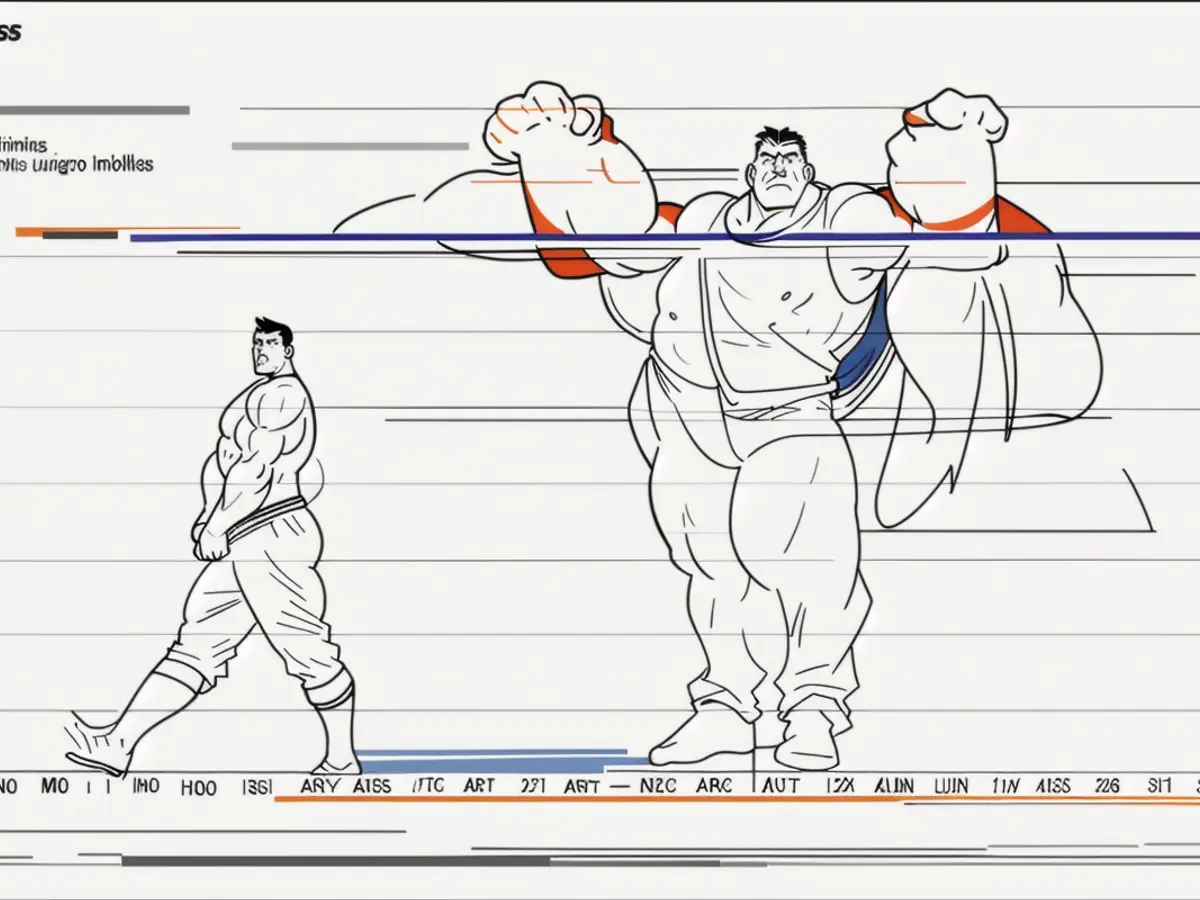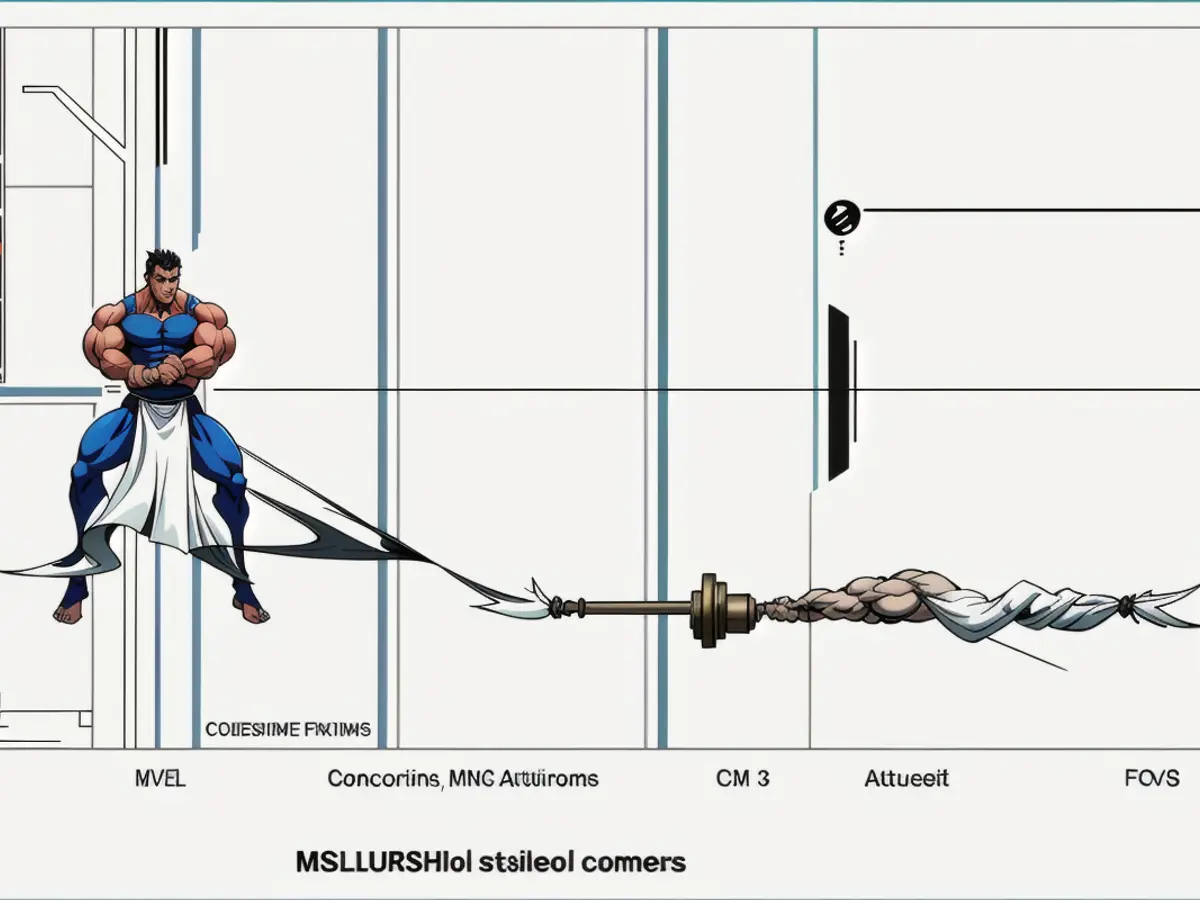Key Signals to Assess Economic Recession Chance:
In a twist, stocks rebounded slightly last week after a brief dip, with the S&P 500 now sitting 7.6% below its mid-February high. Unfortunately, the big hitters, including Microsoft (MSFT), Meta Platforms (META), Amazon.com (AMZN), Apple (AAPL), NVIDIA (NVDA), Alphabet (GOOGL), and Tesla (TSLA), have taken a beating, having decreased by a hefty 18.5% since mid-December. So, what gives?
Well, stocks have been under pressure due to economic growth concerns and policy uncertainty linked to tariffs. Hey, even the most seasoned investors get scared now and then, right? But let's see what this correction means for the average Joe and the stock market gurus' predictions.
Bracing for a Correction

With the S&P 500 dipping over 10% below its February 19 high on March 13, we've officially entered a correction. Now, on the surface, you might think, "What's the big deal? Historically, returns following a correction have been impressive, averaging 13.4% in the following 12 months." However, when the U.S. economy subsequently slides into recession within that 12-month period, those returns plummet to a paltry 1.9%. So, it's crucial to keep an eye on the economy's condition to gauge the stock market's health.
Economy's Health Check

You may have heard that forecasters don't have the best track record when it comes to predicting economic growth with enough lead time. But fear not! Economic models designed to address those challenges are here to help clarify the situation.
According to the Atlanta Fed model, it looks like we may be heading towards a contraction in economic activity during the first quarter. However, this estimate might be overdramatic due to a marked increase in imports to avoid future tariffs. On the other hand, the St. Louis Fed's model remains in positive territory. Interestingly enough, the forecast difference between the two is immense, with the St. Louis Fed anticipating positive growth while the Atlanta Fed is predicting a contraction.

As the Federal Reserve meets to discuss the situation, members note that "uncertainty around the economy outlook has increased."
High-Frequency Data: Early Warning System

Even though accurately predicting an economic downturn in advance is next to impossible, keeping a close eye on certain high-frequency data can help you catch warning signs of increased recession risks. These indicators are chosen for their strong correlation with economic activity and weekly or daily updates.
Softening Labor Market

Job markets are pivotal to the economy since consumer spending tends to dwindle when wages disappear. Although initial claims for unemployment benefits are still below worrisome levels, it's taking longer for those losing their jobs to find new ones, which hints at a softening job market.
Credit Spreads: Bombarded by Risk?

Credit spreads might seem like a foreign concept, but understanding them can help you gauge the overall economic health. As investors get jittery about the potential for corporate bond defaults, they demand higher yields to compensate for that risk. Sticking to investment-grade bonds, Baa spreads have risen slightly but aren't at alarming levels that should send us running for the hills.
Not So Loose Financial Conditions

The Chicago Fed produces the National Financial Conditions Index (NFCI) weekly, looking at a whopping 105 measures across three categories, risk, credit, and leverage, to provide a comprehensive overview of financial conditions. Positive values typically indicate tighter-than-average financial conditions, while negative values represent looser-than-average conditions. This index hasn't entered the danger zone yet, though, so we're still in the clear.
Cyclical Stocks Face the Heat

More economically sensitive cyclical stocks have underperformed their less cyclical counterparts in recent times, suggesting that fears of slowing economic growth are playing a part in the recent market weakness. The reassuring news is that this relative weakness hasn't yet reached the levels seen before past recessions.
The Yield Curve: No Ripe Cause for Alarm

The most well-known predictor of recession is the difference between the 10-year Treasury yield and the 2-year yield, popularly referred to as the yield curve. Historically, when the 10-year yield falls below the 2-year yield – aka a yield curve inversion – a recession is imminent. However, there are instances when the yield curve inverts without resulting in a recession, as we've seen in 1998 and mid-2022. Lucky for us, the yield curve isn't inverted at the moment, so we're safe from that worry.
What's Ahead?

This week, we've got February durable goods orders on Wednesday and personal income and spending on Friday on the agenda. These won't be game-changers, but they might shed some additional light on the current situation.
All in all, while calling shots when it comes to short-term stock and economic movements is tricky, especially during uncertain times like these, regular monitoring of these high-frequency indicators can help provide an early warning system for a significant economic contraction.

Here's the bottom line: the odds are tilted towards an economic slowdown rather than a full-blown recession, which is favorable for reasonable stock market returns following the correction. As always, expect the unexpected and keep a portion of your portfolio handy for those rainy days. Choose stocks with businesses that can endure economic disruptions and even capitalize on them, regardless of the stock price movement. Safe and steady folks, stay tuned for more updates!
- With the S&P 500 showing a significant decline, and economic growth concerns along with tariff uncertainty putting pressure on the stock market, it might be important to consider whether a bear market and potential recession indicators are at play.
- As the Federal Reserve evaluates the economic condition, they acknowledge increased uncertainty, suggesting that the fed rate cuts might be a possibility to mitigate the impact of the current economic environment.
- To make more accurate predictions about the stock market and recession risks, investors can closely watch high-frequency data like credit spreads, labor market indicators, and the yield curve; strategically buying or selling stocks accordingly, depending on the signs they reveal.








